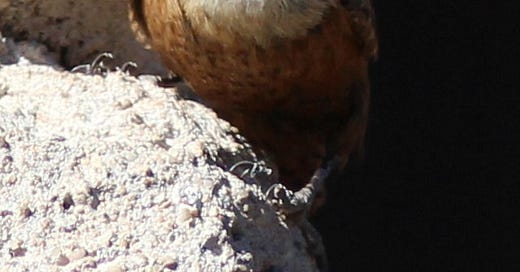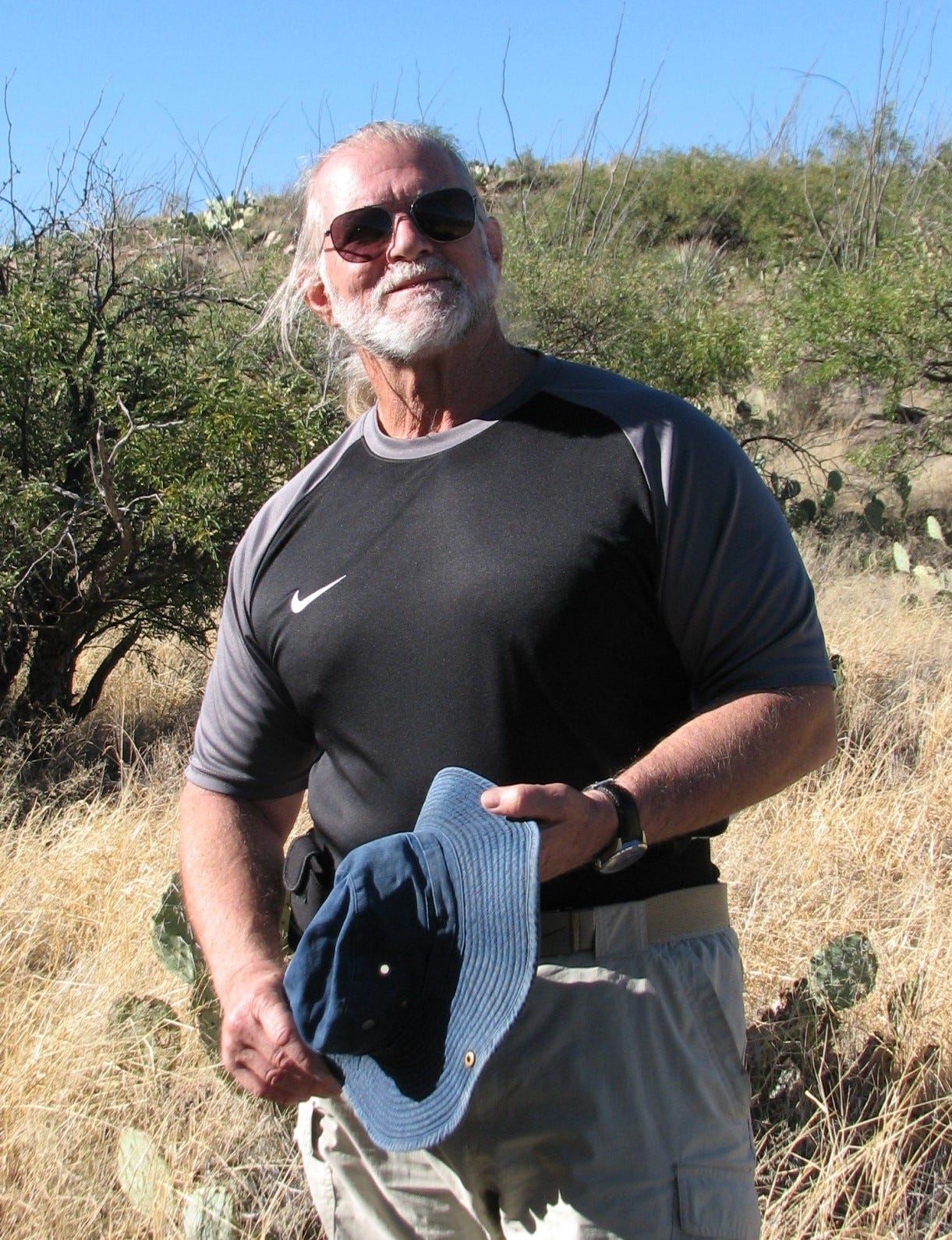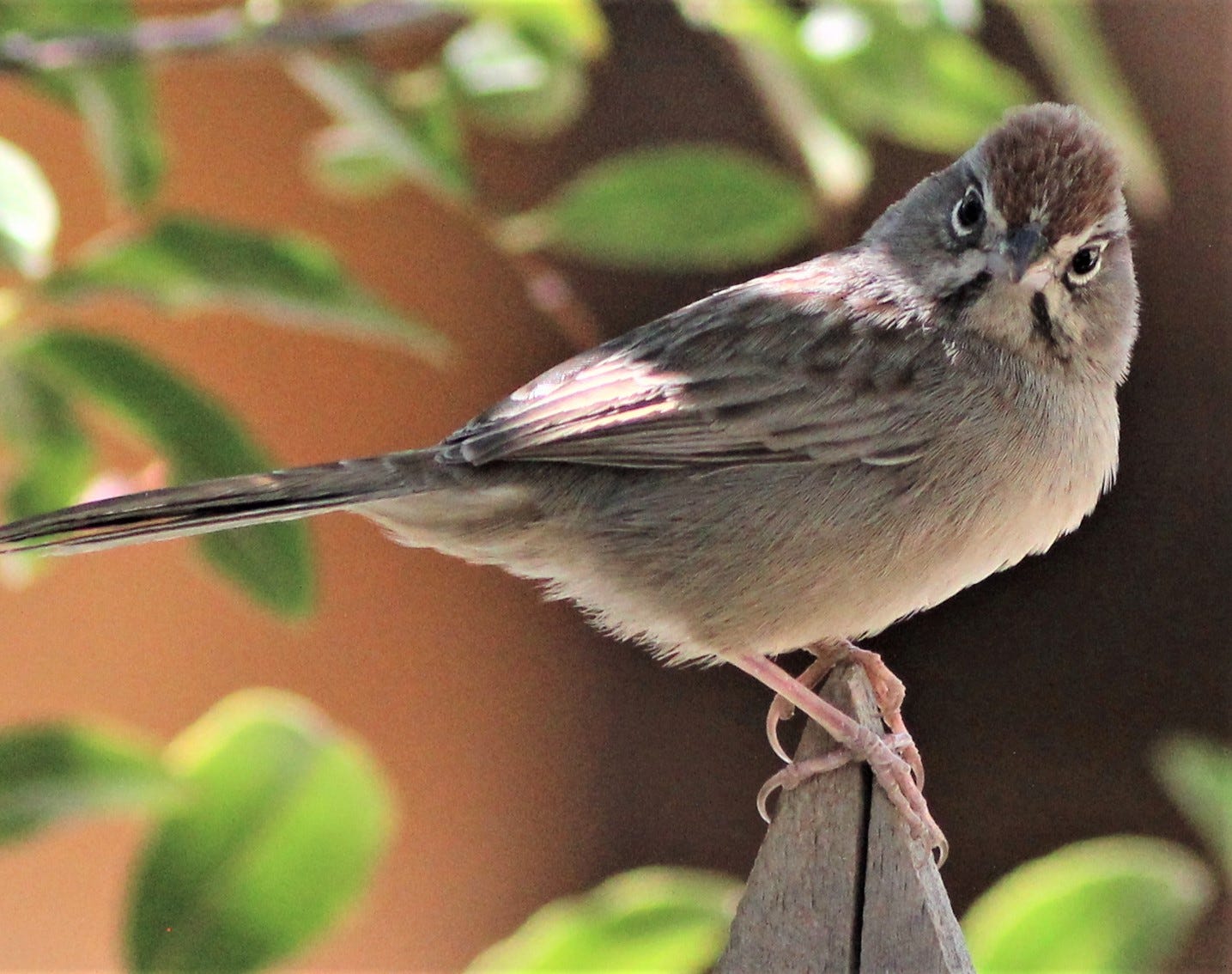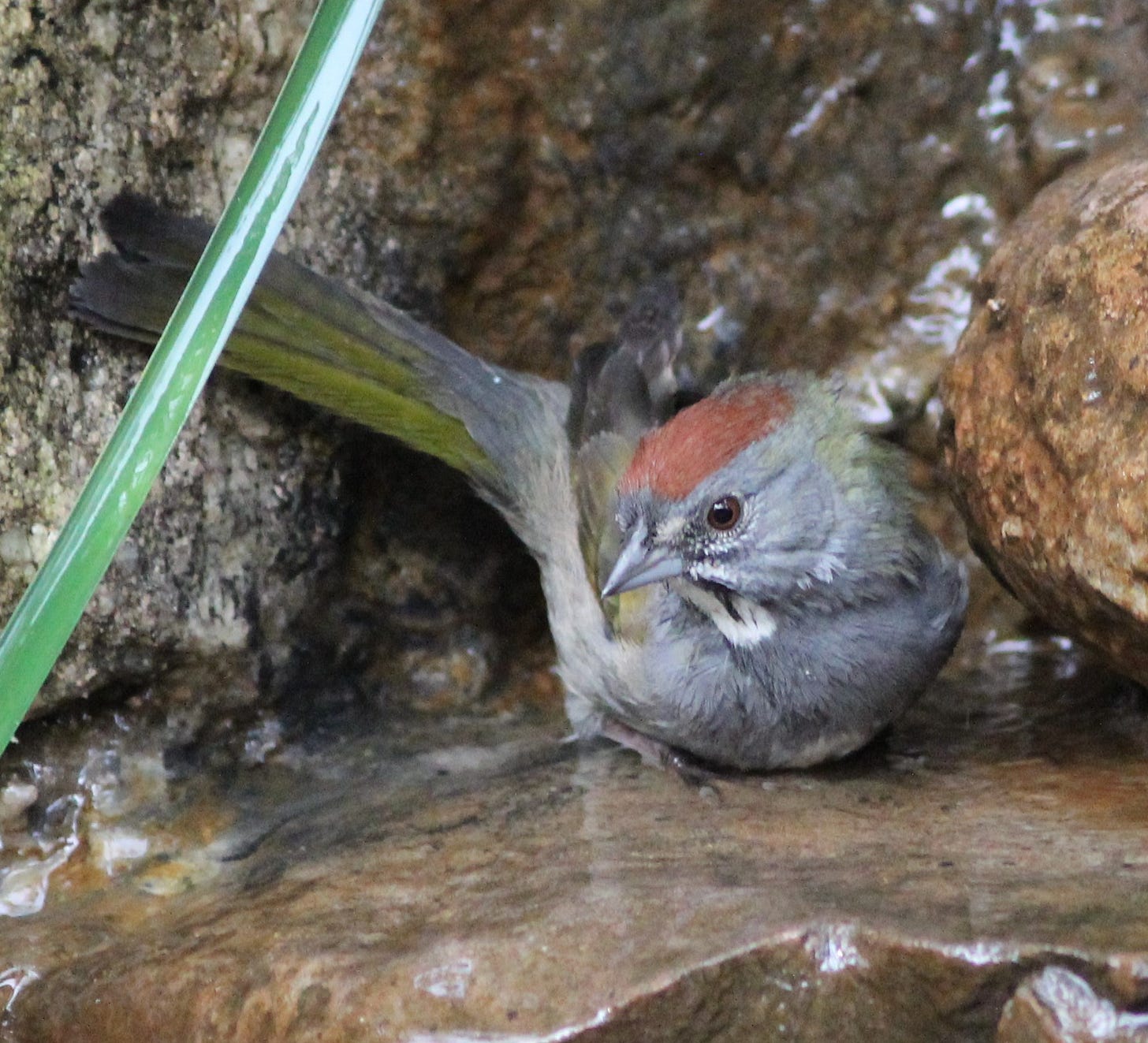June 5, 2022
A day of absences. One year ago today, my best friend left this world. Walker Thomas. Caveman, writer, teacher, social hermit, my hiking and camping and fly-fishing buddy of wild Arizona rivers and grottos whose favorite animal was the canyon wren, the secretive and solitary ghost of slickrock country.
I’m sure the wrens still sing liquid arias for you outside your cave in the Rincon Mountains. At least I hope so, since the birds have gone missing in my canyon. Their absence is a keen reminder of yours.
In my last post, I mentioned how regular birds like green-tailed towhees, rufous-crowned sparrows, and canyon wrens have been missing from the yard for many months. Today I’m reading the Tucson Audubon Society’s blog “Chip Notes,” which caught my eye with its title, “Where Are All the Birds?” Biologist Tim Helentjaris writes about a conversation he had with another biologist and how in 2021 neither had seen any rufous-crowned sparrows or canyon wrens. “These are two common birds in Southeast Arizona,” he says. “Did we miss them—or was there something else going on?”
Tim suspected something was going on: climate change. Specifically, the catastrophic drought of 2020.
He began compiling data submitted to eBird in southeast Arizona for the past three years, 2019 (pre-drought), 2020 (drought), and 2021 (recovery). What he found stunned him. Fifteen species showed a marked decrease in observations by 2021. Among the trogons and gnatcatchers and vireos, rufous-crowned sparrow sightings fell by 40 percent. Canyon wren by an “incredible” 75 percent.
I’ve recorded rufous-crowns 122 times in the yard, in every month of the year since I started using eBird at the beginning of the Pandemic in February 2020. Until last October.
The same with the green-tailed towhees. 87 records every spring and fall since 2020. But none this spring.
And, canyon wrens: 131 sightings. Until last September.
“Is this what global warming looks like in the Southwest? Tim Helentjaris asks. “Not a gradual, almost imperceptible loss of birds from year-to-year, but catastrophic drought effects where the recovery is interrupted by our continuing higher temperatures and drought?”
Those effects on our birds, he says, are continuing in 2022.
As I mentioned in my last post, my Scots-Irish ancestors have a word that means a deep-seated sense of belonging to the place where your roots lie. Cianalas. On this day of absences, I think what I’m experiencing is more like what the Welsh call hiraeth, a homesickness for a place I cannot return to, a home that maybe never was, a grief for something lost and unrecoverable in my past.
For something and someone.
Thanks for subscribing! If you haven’t seen it yet, check out the Big Yard featured on Arizona Illustrated:
https://tv.azpm.org/p/season8/2022/4/8/208875-for-the-birds/








Maybe we are all losing our home…
I feel like caring emojis are the right response to this post and yet it won’t let me enter emojis. So image these words as a hug and a deep breath taking in all that has been lost.